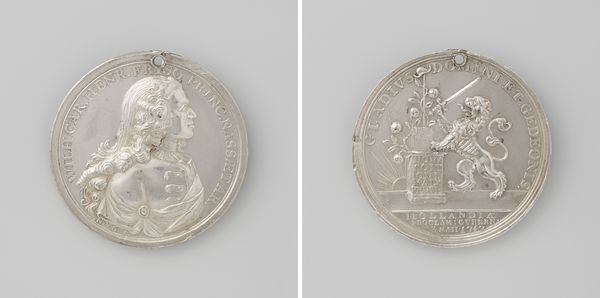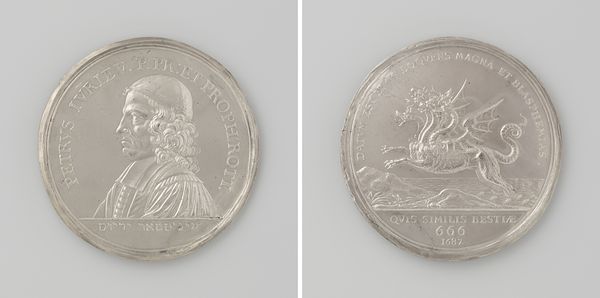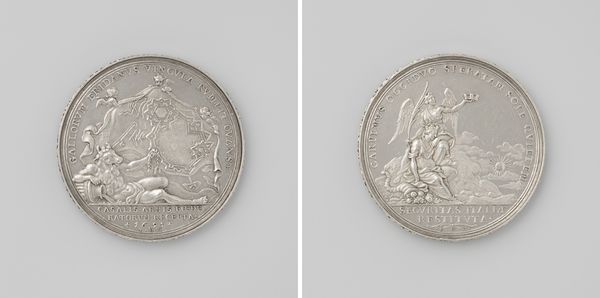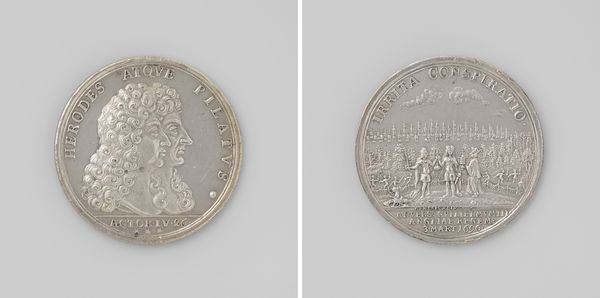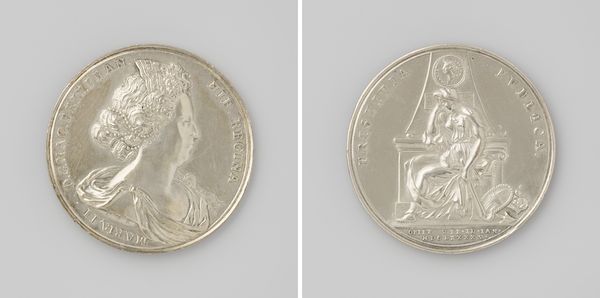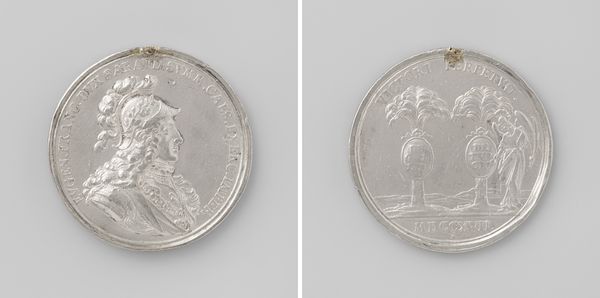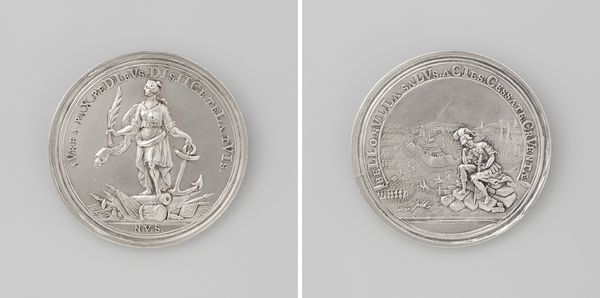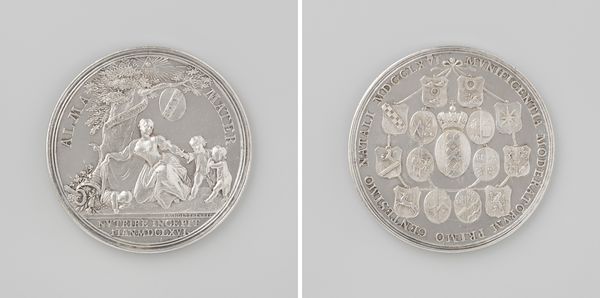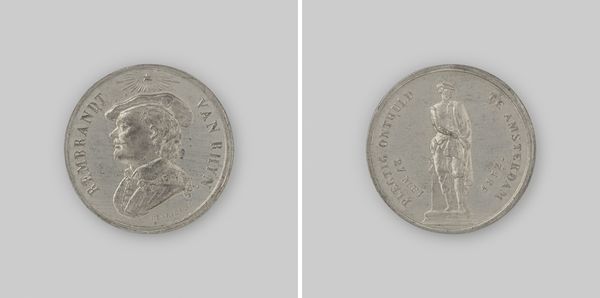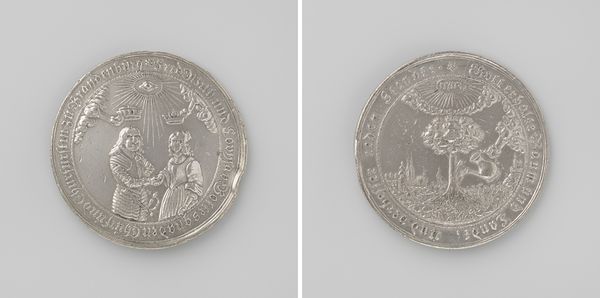
metal, relief, sculpture
#
portrait
#
baroque
#
dutch-golden-age
#
metal
#
relief
#
sculpture
#
history-painting
Dimensions: diameter 4.8 cm, weight 46.12 gr
Copyright: Rijks Museum: Open Domain
Editor: This is a metal relief sculpture entitled "Moord op de gebroeders de Witt" which translates to "The Murder of the De Witt Brothers". It was created in 1672 by an anonymous artist and is currently held in the Rijksmuseum. The duality of the work is striking, how might you interpret it? Curator: The artwork demands a formal assessment independent of historical narrative. The artist’s intent is most evident in the visual language itself, focusing first on the compositional arrangement within two near perfect circles. On one side, the relief presents a unified, almost stoic pairing of figures in profile; the textures in their hair and clothing, and the sharpness of the engraving technique employed creating this contrasts greatly with the tumultuous sea depicted on the other half. Do you agree that the artist’s choice of contrast is significant here? Editor: Absolutely. The rendering of the textures and detail against such drama speaks volumes. The shipwreck side seems to echo a tempestuous mood, where the figures are calm in contrast, it is almost too clean. It is also interesting to me, this being on metal and the cold, detached medium contrasting a narrative with obvious heat. Curator: Indeed, metal as medium offers a unique reflective surface, enhancing the contrast you mentioned. Reflect on the engraving as a deliberate act and it becomes apparent: The rigorous technique speaks directly to control and order. The very circular shape further enforces this. Does the text framing the compositions contribute formally, in your estimation? Editor: The addition of text introduces another layer – it adds both contextual meaning, but more notably, the lettering also frames the circular space, pushing my eyes back towards the image in each circle. Curator: Precisely. The letters add structure. This order, this arrangement, despite the portrayed events, becomes the primary meaning. It illustrates order over chaos through the structure, color, and balance of the composition. Editor: I had not considered how those structural qualities become their own language. Thank you! Curator: It is within the formal elements, freed from context, that art's inherent meaning is ultimately derived. Thank you for these valuable insights.
Comments
No comments
Be the first to comment and join the conversation on the ultimate creative platform.
